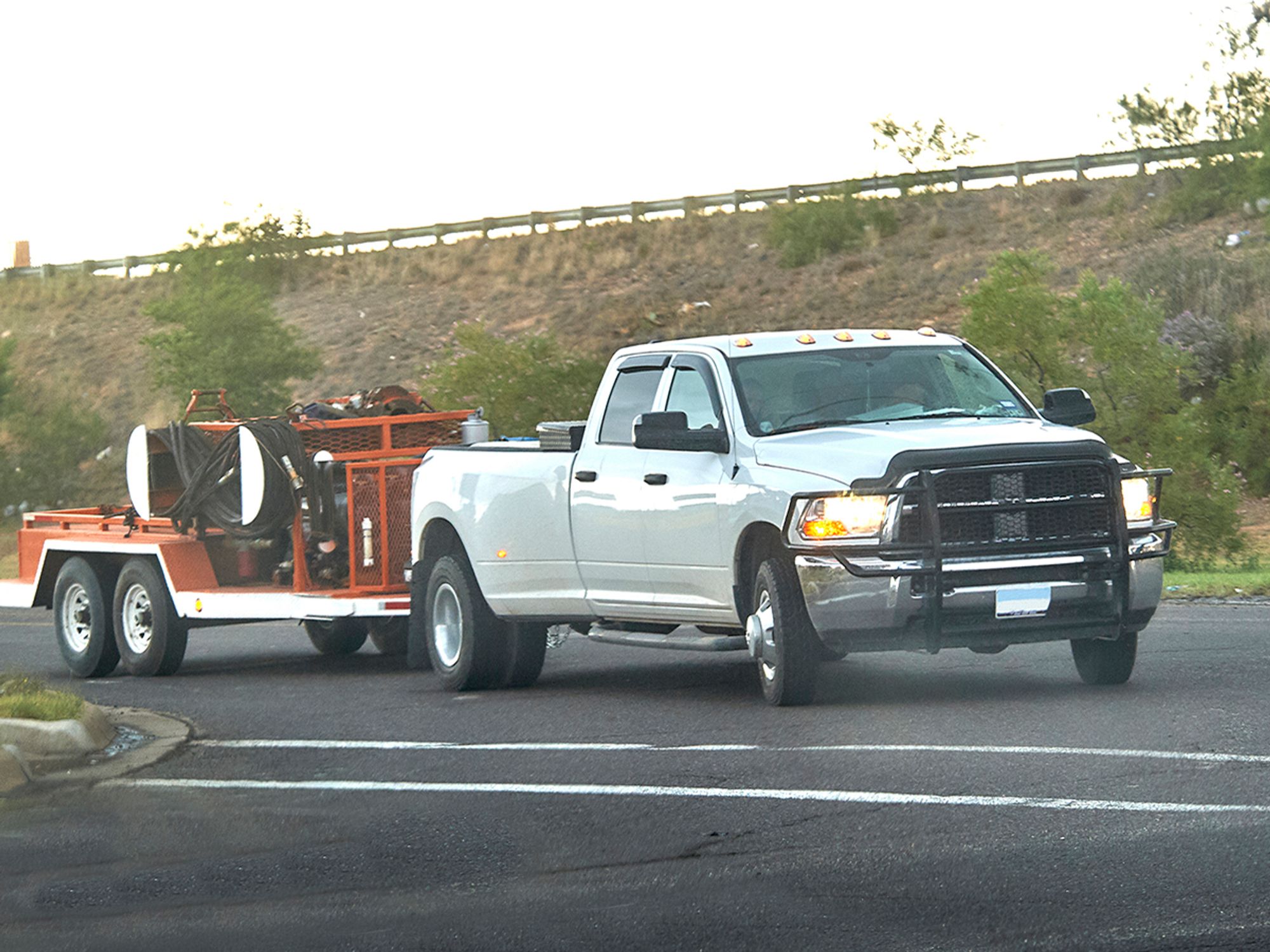Basic CMV definition

- Understanding what a CMV is requires familiarity with several important definitions.
- In general, vehicles over 10,000 pounds are DOT-regulated.
- State-by-state rules may differ.
The basic definition of “commercial motor vehicle” (CMV) used throughout most of the Federal Motor Carrier Safety Regulations (FMCSRs) — the federal rules governing truck and bus safety — is found in 49 CFR 390.5. This definition refers to a motor vehicle used on a highway in interstate commerce that meets any one of the following criteria:
- Has a gross vehicle weight rating (GVWR) or gross combination weight rating (GCWR), or gross vehicle weight (GVW) or gross combination weight (GCW) of 10,001 pounds or more, whichever is greater;
- Is designed or used to transport nine or more passengers (including the driver) for compensation;
- Is designed or used to transport 16 or more passengers (including the driver), not for compensation; or
- Is transporting hazardous materials in a quantity requiring the vehicle to be placarded.
As used in this CMV definition:
- Gross vehicle weight rating (GVWR) means the value specified by the manufacturer as the loaded weight of a single motor vehicle.
- Gross combination weight rating (GCWR) means the greater of: (1) the value specified by the manufacturer of the power unit, as shown on the certification label, or (2) the sum of the GVWRs or the GVWs of the power unit and the towed unit(s), or any combination of those that produces the highest value. Note that the GCWR of the power unit will not be used to define a commercial motor vehicle when the power unit is not towing another vehicle.
- Highway means any road, street, or way (whether on public or private property) that is “open to public travel,” meaning that the road or way is available (except during scheduled periods, extreme weather, or emergency conditions) and passable by four-wheel standard passenger cars, and is open to the general public for use without restrictive gates, prohibitive signs, or regulation other than restrictions based on size, weight, or class of registration.
- Interstate commerce means trade, traffic, or transportation in the United States:
- Between a place in a state and a place outside of that state (including a place outside of the United States);
- Between two places in a state through another state or a place outside of the United States; or
- Between two places in a state as part of trade, traffic, or transportation originating or terminating outside the state or the United States.
- Motor vehicle means any vehicle, machine, tractor, trailer, or semitrailer (or any combination of those) propelled or drawn by mechanical power and used on highways in the transportation of passengers or property (including the vehicle itself). This does not include vehicles operated on rails, nor trolley buses powered by an overhead electrical wire.
Which rules apply to these CMVs?
The regulations in Parts 390–399 apply to drivers of vehicles meeting the basic CMV definition, with some exceptions. That is, whenever the phrase “commercial motor vehicle” appears in Parts 390–399, it is referring to the basic definition.
Such regulations include those for driver qualification, hours of service, cargo securement, vehicle marking, and inspection and maintenance, among many others.
Based on this, note that the FMCSRs do not apply to motor vehicles that weigh or are rated at 10,000 pounds or less unless they transport enough passengers or hazardous materials. Even if not regulated as CMVs, such vehicles remain subject to normal traffic laws, registration and insurance requirements, and other state-administered rules.
Caution!
The CMV definition includes combinations of vehicles that by themselves may not be regulated. For example, a pickup truck that weighs less than 10,000 pounds and is not normally regulated as a CMV could become a regulated CMV when pulling a small trailer. Both the trailer and truck would then be regulated under the FMCSRs.
Intrastate operations
A key part of the CMV definition is “interstate commerce,” meaning commerce that crosses state or national borders. Motor carriers and drivers involved only in intrastate (in-state) commerce are subject to that state’s CMV laws and regulations. Under those laws or regulations, the CMV definition may differ from the one already described.
